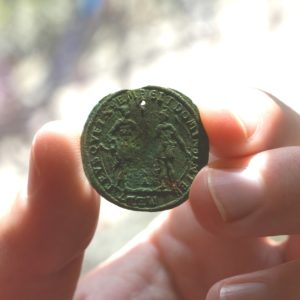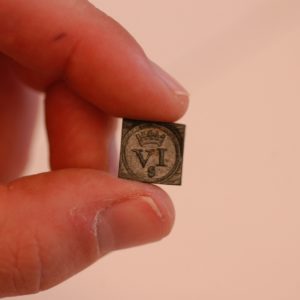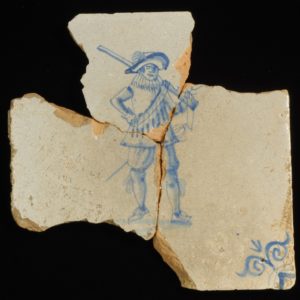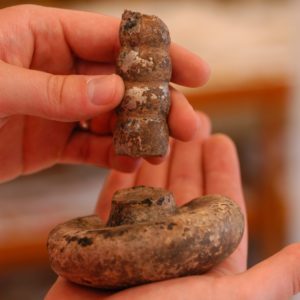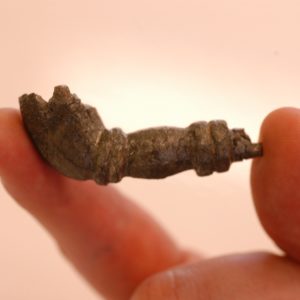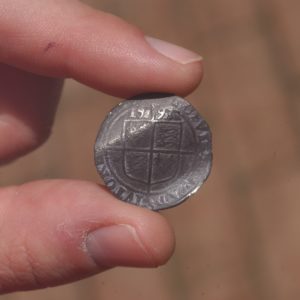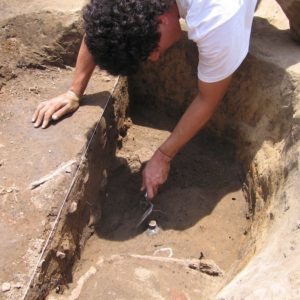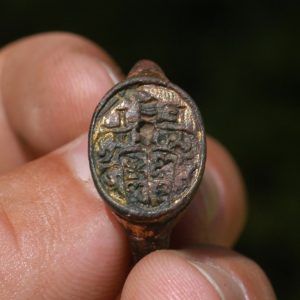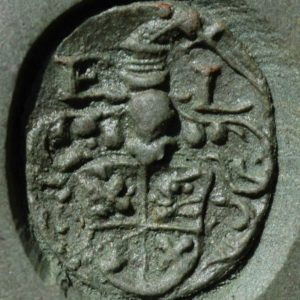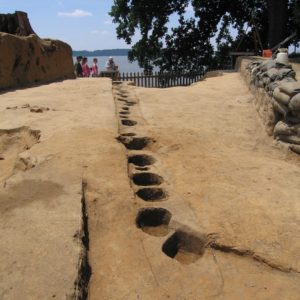James Fort continues to be excavated bit by bit and has yielded some interesting discoveries over the past month. Archaeologists have found a possible 17th century well, a 17th century cellar filled with pottery, and have excavated some of the western palisade wall postholes, which have given them insight regarding their size and function.
A possible well has been found near the center of the fort area. Initial excavations of the upper layers of the feature have revealed ceramics and case bottle glass dating to the second quarter of the 17th century. This dates at least this layer of the feature after the initial fort period, and deeper excavations are to come.
Archaeologists are also excavating a cellar not far from the possible well feature. They have discovered coarseware pottery within, the style of which points to a potter known to have worked in Jamestown in the second quarter of the 17th century.
Digging along the western palisade wall has uncovered some interesting clues about the wall’s precise physical structure. As archaeologists discovered posthole after posthole of the fort’s wall, a large gap near the western-most bulwark was found. After several feet of no postholes, they resume again in the same straight line. This might indicate the presence of a gate. Archaeologists have also excavated to the bottom of several of these postholes and those that are nearer to where the bulwark starts are significantly deeper. This is evidence that the wall was higher as it neared the bulwark, which is a possible indication of a ramp to the raised bulwark platform.
The past month of digging has also yielded many interesting artifacts, one of which is a coin weight, an object used to test the weight of a certain coin. By placing a coin on one side of a scale and its appropriate coin weight on the other, one could tell if the coin has the appropriate weight. This was used to check the coin’s authenticity as well as to see if any of its metal had been removed. This particular coin weight is for a French coin called an ecu.
A brass Nuremberg jetton from the 1590s depicting scenes from the Bible has also been found. On one side of the coin, King David stands on the left with a harp. He is facing Jonathan who has a bow. On the reverse is a scene of Amasa embracing Joab, who is about to stab him.
An English silver sixpence dated 1593 has been excavated. On one side is a bust of Elizabeth I and a Tudor rose, and on the other is the date above the royal coat-of-arms. The coin is quite tarnished and is in the process of being restored and conserved.
A pewter pipe dating to the early 17th century is another interesting find.
A glass 17th century version of a clothes iron, called a linen smoother, was recently uncovered. By heating up the bottom and then pressing down on the fabric, this object was used to get rid of wrinkles.
Several decorative tiles probably placed around a fireplace or along a baseboard have been found. Dating to the early 17th century, the one shown here depicts a soldier with a musket and sword.
A signet ring with the initials EL and an intricate coat-of-arms has been unearthed. The design is purposely reversed so that it may be used to make correctly-oriented impressions into wax seals.
related images
- Jetton depicting biblical scenes
- Coin weight for a French Ecu
- Decorative delft tile manufactured in the Netherlands
- Linen smoother
- Pewter pipe
- English silver sixpence
- Archaeologists excavating 17th-century cellar
- Excavating possible well feature containing case bottle glass
- 2005 field school students and Jamestown Rediscovery staff
- Side view of signet ring
- Signet ring with ‘EL’ initials and coat-of-arms
- Impression made by signet ring
- Western palisade wall



